Key takeaways:
- Eye-catching templates balance aesthetics and functionality, creating emotional connections with users and enhancing engagement.
- Consistency and clarity in design foster brand recognition and trust while aiding user navigation and experience.
- Using design tools like Canva and Adobe XD streamlines the template creation process and encourages collaboration among teams.
- Case studies demonstrate the impact of effective templates through visual appeal and strategic design choices that inspire user engagement and action.
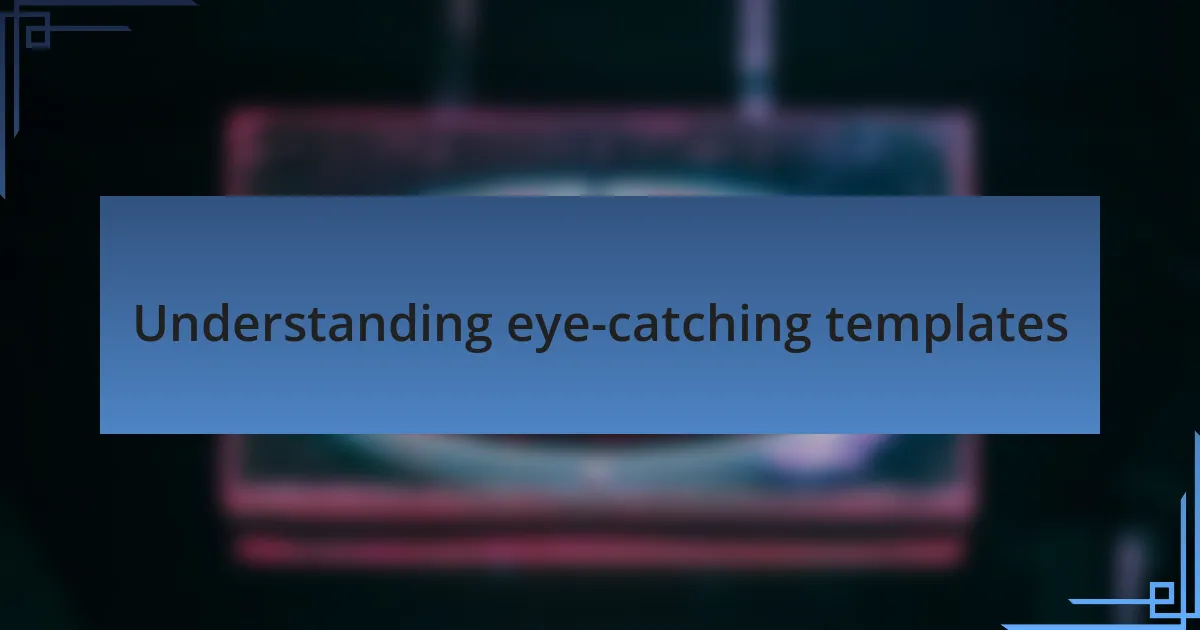
Understanding eye-catching templates
Eye-catching templates serve as the foundation of an appealing digital presence. They capture attention at first glance, almost like a well-crafted story beckoning readers to dive deeper. I remember the rush I felt when I first implemented a vibrant template for a client; the immediate spike in engagement was both exhilarating and reaffirming of the power that design holds.
The magic of a template lies in its ability to communicate a brand’s essence while maintaining usability. Have you ever clicked on a beautifully designed website only to leave because it was confusing? That disconnect can be frustrating. I’ve learned that a successful template balances aesthetics with functionality, ensuring that users not only stay but also feel an emotional connection to the content.
Color, typography, and layout are not just design elements; they evoke feelings and set the tone for the user experience. For instance, I once experimented with bold colors for a client in the wellness industry, and the response was overwhelmingly positive. It reminded me that when templates resonate with viewers’ emotions, they can transform casual visitors into loyal customers. What design choices have you found to be impactful in your experiences?
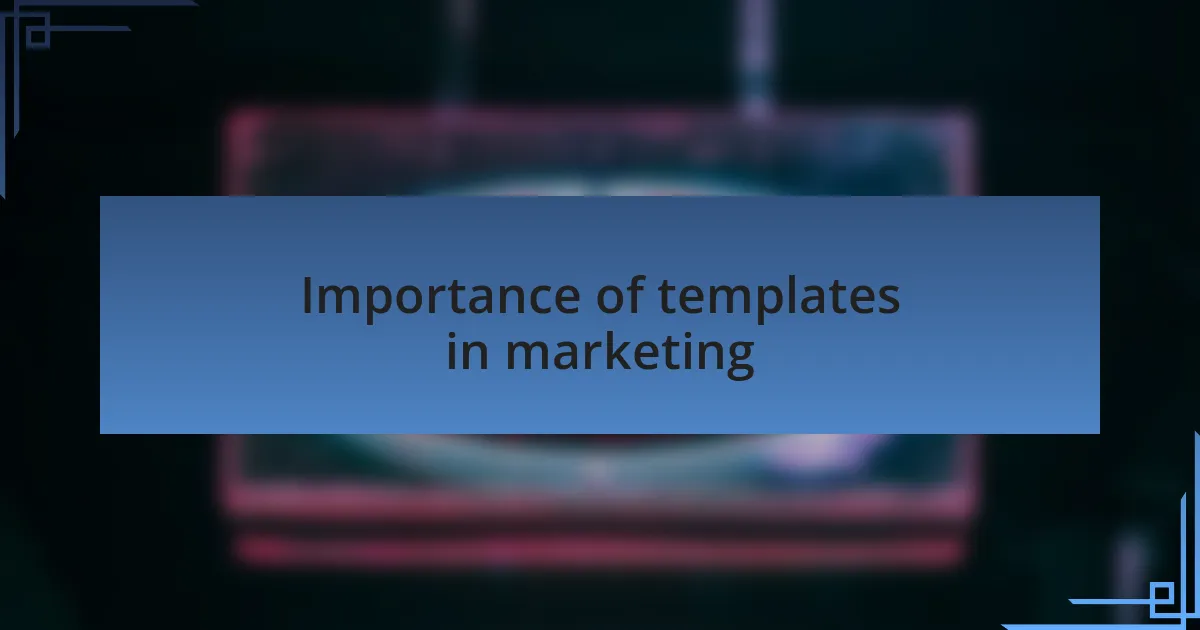
Importance of templates in marketing
Templates play a crucial role in streamlining the marketing process. From my experience, using a cohesive template allows brands to present a unified image across various platforms. This consistency builds trust; have you noticed how professional-looking materials often make you more likely to engage with a brand?
Moreover, templates save time without sacrificing quality. I recall a project where initial designs took days to finalize, only to be enhanced significantly with a well-structured template for content. This shift not only accelerated our campaign but also improved the overall creative outcome, illustrating how efficiency can lead to more impactful results.
Lastly, the adaptability of templates is invaluable in marketing. I once tailored a social media template to fit multiple campaigns, adjusting colors and layouts while retaining the core design. This flexibility not only catered to different target audiences but also simplified our design process, enabling me to focus on strategy rather than starting from scratch every time. How do you adapt your designs for various campaigns?

Key elements of effective templates
When designing effective templates, clarity is essential. I’ve learned that a clean layout with clear visual hierarchies makes information easy to digest. Have you ever left a website because you couldn’t find what you needed? I certainly have, and that’s a reminder of why prioritizing simplicity in design speaks volumes.
Another key element is the use of compelling visuals. A memorable template often includes striking images or graphics that resonate with the intended audience. For instance, during a recent campaign, I selected images that mirrored our message, which not only captivated our audience but also strengthened our brand’s emotional appeal. Isn’t it fascinating how the right image can say a thousand words?
Finally, consistency is vital across all elements of your template. I remember the first time I created a series of email newsletters. By maintaining a consistent color palette and font style, I was able to reinforce brand recognition over time. It made me realize that each element of a template must work harmoniously, creating a cohesive experience that feels familiar and trustworthy. How do you ensure consistency in your designs?
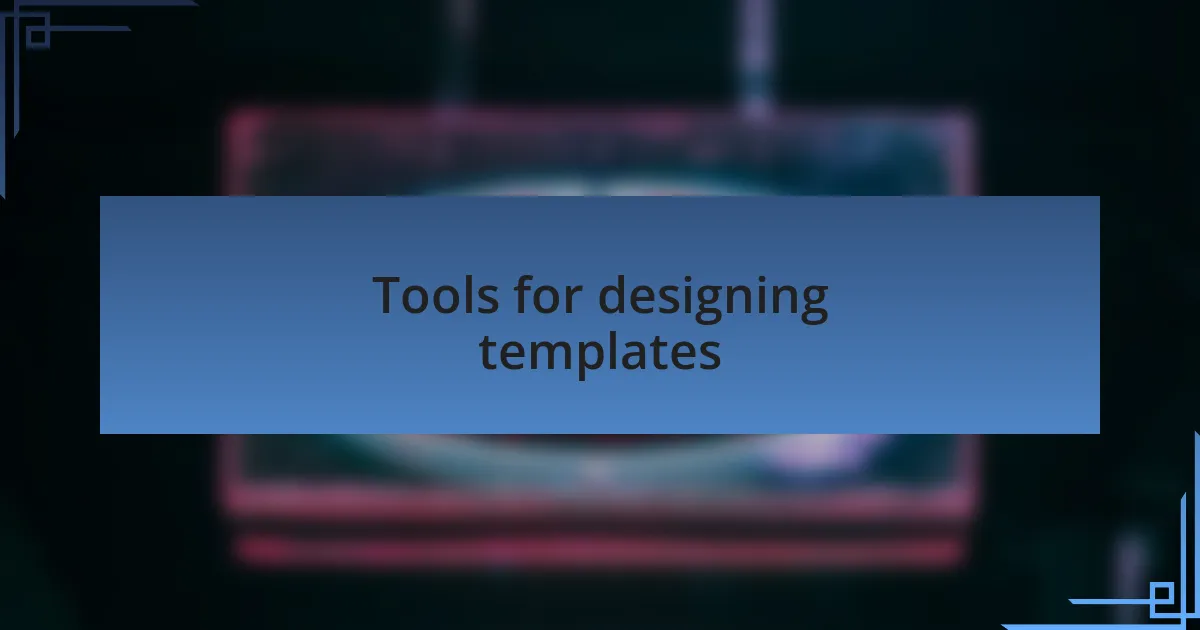
Tools for designing templates
When it comes to designing eye-catching templates, there are a variety of tools at our disposal that can make the process easier and more enjoyable. I often find myself turning to Canva for its user-friendly interface and vast library of templates. Have you ever tried using it? The drag-and-drop features allow you to experiment with various elements without feeling overwhelmed, which is particularly beneficial for those of us who might not be graphic design experts.
Another tool I frequently use is Adobe XD, especially when I’m working on more intricate designs. This software allows for prototyping, so I can see how my templates will function in real-time. I vividly remember the first time I used Adobe XD; it felt like stepping into a whole new dimension of creativity. I could tweak layouts, adjust color schemes, and see instant feedback, which ultimately helped me create a template that was not just aesthetically pleasing but highly functional. Have you experienced a moment like that where the right tool transformed your creative process?
A standout choice for collaboration is Figma. This tool shines when I’m working with teams, as it allows real-time editing and feedback. I recall a project where multiple designers contributed to the same template. The ability to comment directly on the design made everything smoother, and our final product reflected a blend of perspectives that made it richer. Isn’t it incredible how the right tools can foster creativity and collaboration among team members?
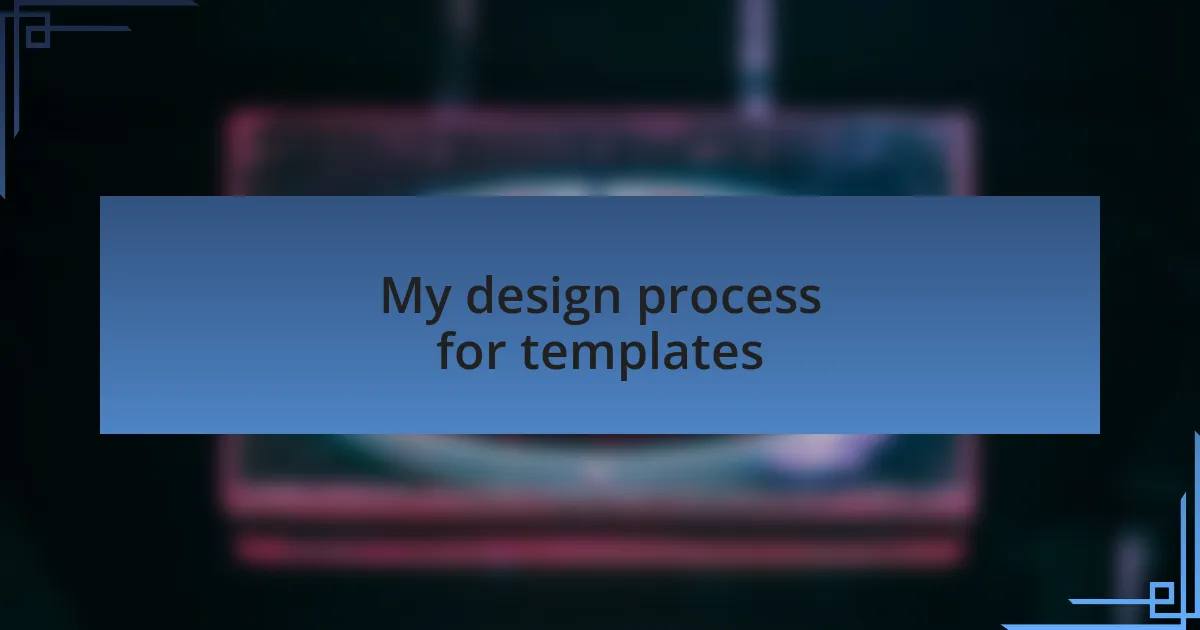
My design process for templates
My design process for creating templates begins with a clear vision of what I want to achieve. I often start by sketching out several ideas on paper, letting my creativity flow without the constraints of technology. There’s something deeply satisfying about putting pencil to paper and seeing concepts come to life, don’t you think? It allows me to explore various layouts and styles before committing to digital design.
Once I have a few sketches I’m excited about, I dive into my favorite design tools, like Canva and Adobe XD. I remember a specific project where I had a wild idea for a template that blended vintage and modern elements. As I brought that idea into Adobe XD, watching it evolve on the screen was exhilarating. Using layers and prototype features helped me play with interactions that I had never considered before, shifting vulnerable ideas into polished designs. Have you ever felt that thrill of transformation when a design finally clicks into place?
Throughout the process, I emphasize the importance of feedback. Whether it’s from colleagues or potential users, their insights are invaluable in refining my templates. I once shared a draft template with my team, and the feedback led us to discover a color palette that sparked even more creativity. It’s amazing how collaboration not only enhances my work but often brings out ideas I hadn’t even thought of. How do you feel about involving others in your design journey?
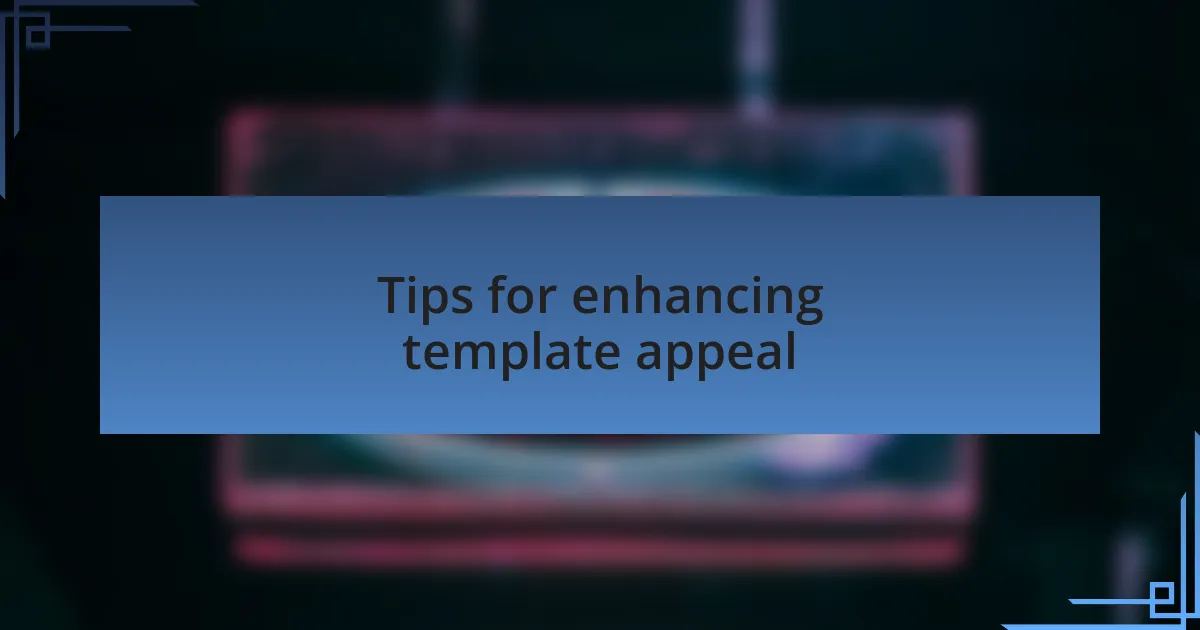
Tips for enhancing template appeal
One effective tip for enhancing template appeal is to focus on color harmony. I remember a project where I was torn between two vibrant color schemes. After experimenting, I realized that harmonious colors not only attracted attention but also created an inviting atmosphere. Have you ever noticed how certain palettes seem to evoke specific feelings? It’s fascinating how colors can convey emotions and set the tone of your template.
Incorporating white space is another essential technique I often utilize. I had a design where I initially crowded elements together, hoping to showcase more features. However, upon revisiting it with a fresh perspective, I learned that giving components room to breathe made the template much more digestible. Have you ever felt overwhelmed by cluttered designs? A clean layout not only enhances readability but also elevates the overall aesthetic, making it more appealing to users.
Lastly, I believe in the power of typography. Selecting the right fonts can drastically change how a template is perceived. During one of my projects, I switched from a standard font to a handwritten style and instantly noticed an increase in engagement. It sparked a conversation among users, which made me realize—how much impact do you think typography has on your audience’s connection to the content? Finding the perfect fonts can breathe life into your design and truly attract attention.

Case studies of successful templates
When looking at successful templates, one case that stands out is a project I worked on for a local bakery. They needed a complete website overhaul, and I opted for a minimalistic design with striking visuals of their pastries. As we implemented larger images paired with concise text blocks, the engagement skyrocketed. Have you ever visited a site where the images made your mouth water? That’s the magic of blending visuals with the right amount of information; it can create an irresistible allure.
Another impressive example is a non-profit I collaborated with, which focused on environmental conservation. I remember being inspired by their mission and wanting to convey that through the design. Using earthy tones and dynamic graphs, we showcased their impact effectively. The feedback was overwhelmingly positive, with many commenting on how the template not only informed but also inspired action. Isn’t it incredible how the right design can drive people to not just read, but to participate?
Lastly, I think about a tech startup we worked with that needed a modern, sleek look. I experimented with a grid layout that allowed equal emphasis on various elements. The result was a clean, professional feel that mirrored their cutting-edge brand. When I received a note from them saying their visitors felt “inspired” just by browsing their site, it made my day. What does it say about our designs when the templates evoke emotions and calls to action? That’s the real power of a well-crafted template.